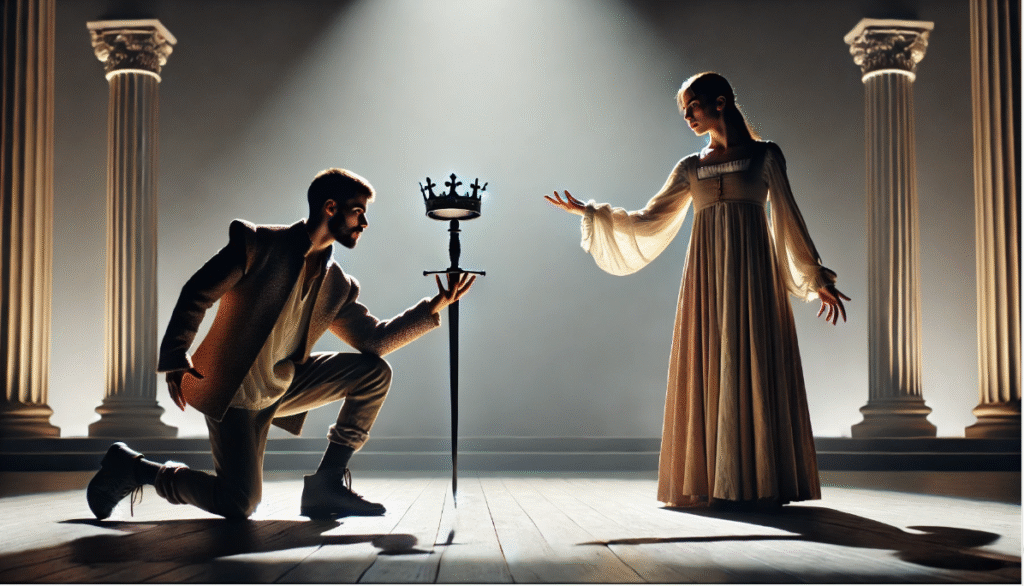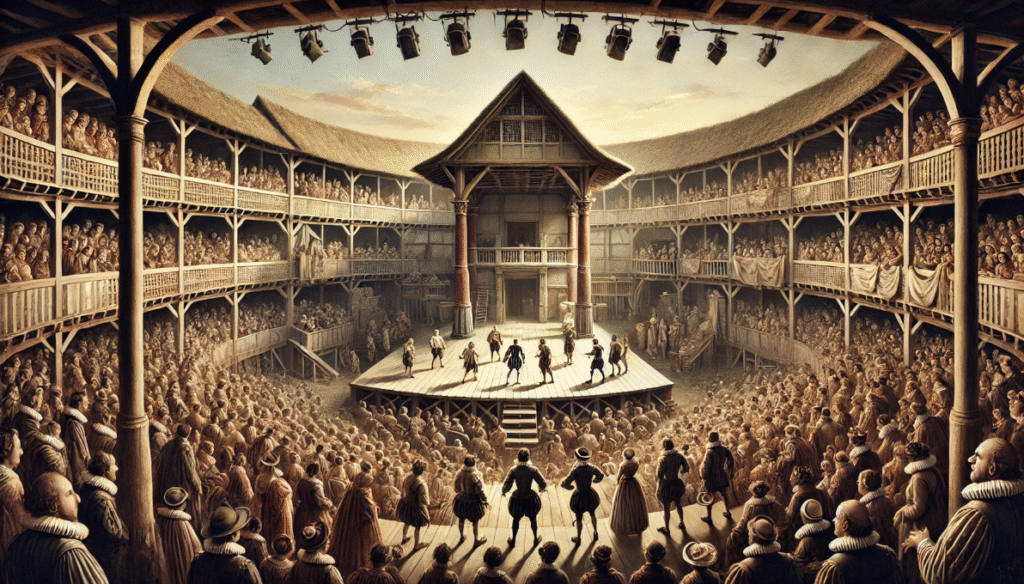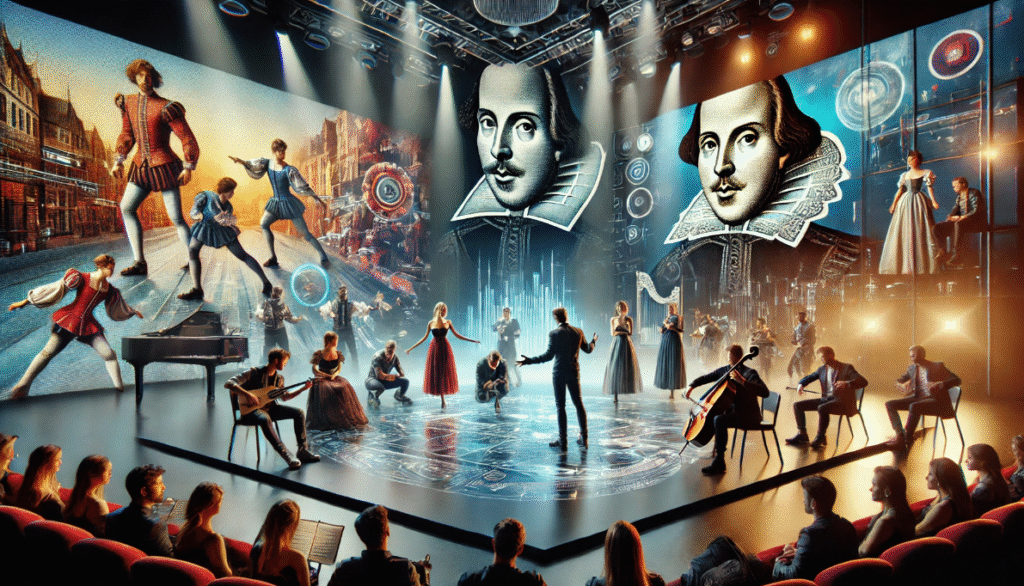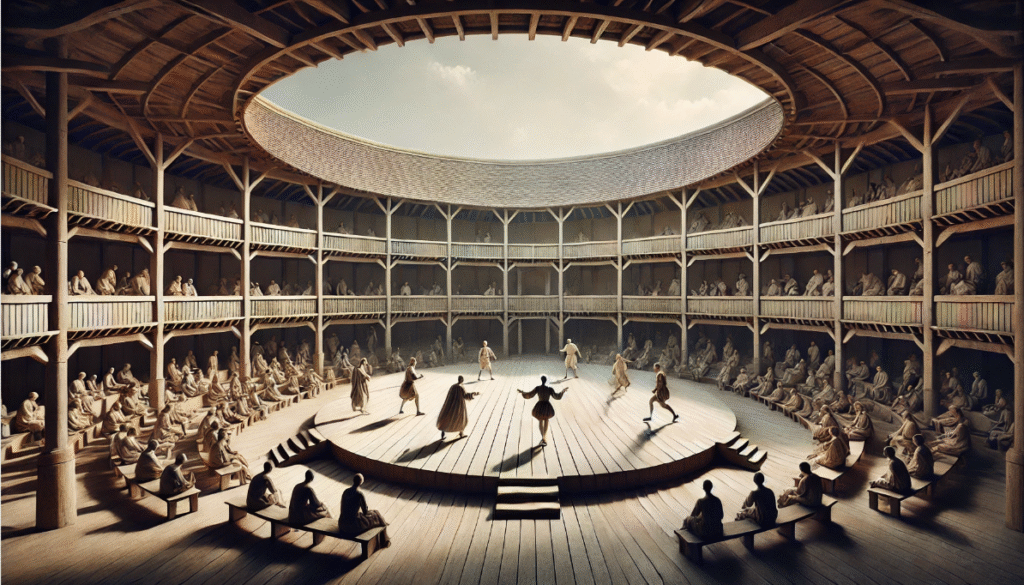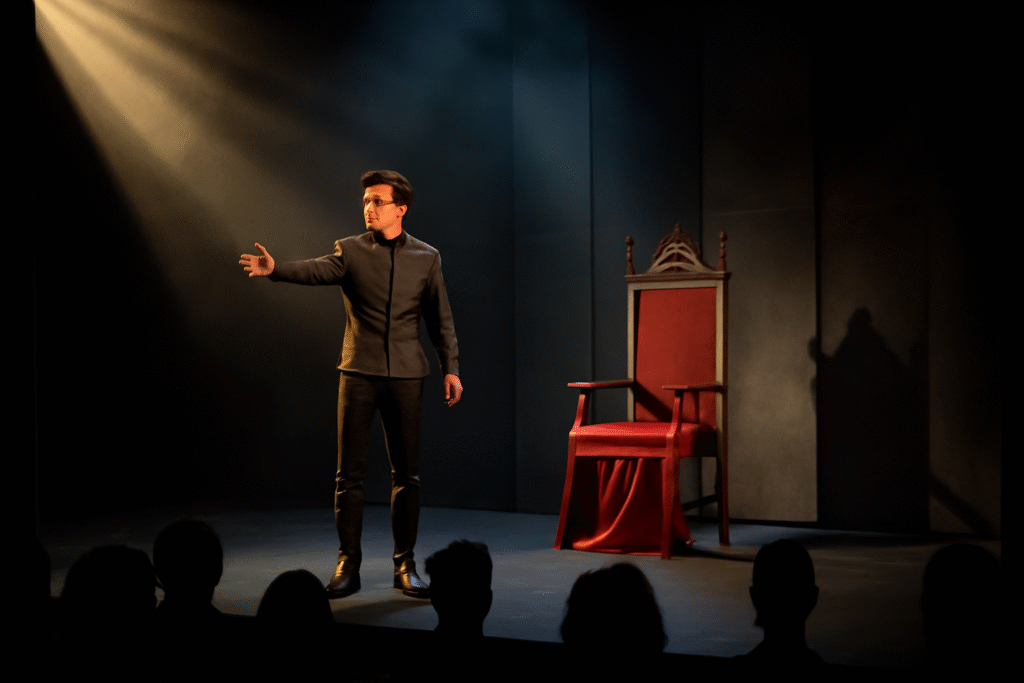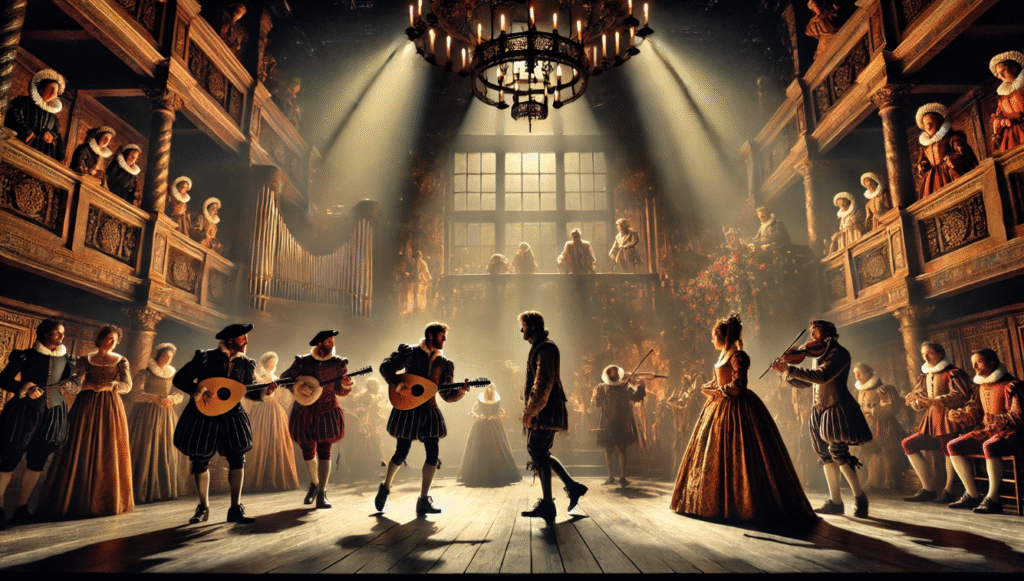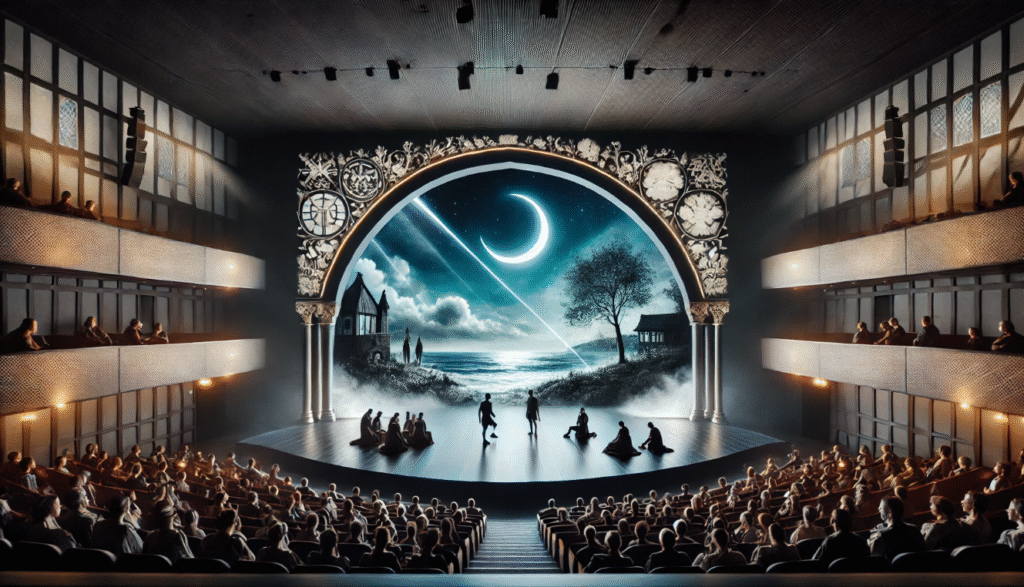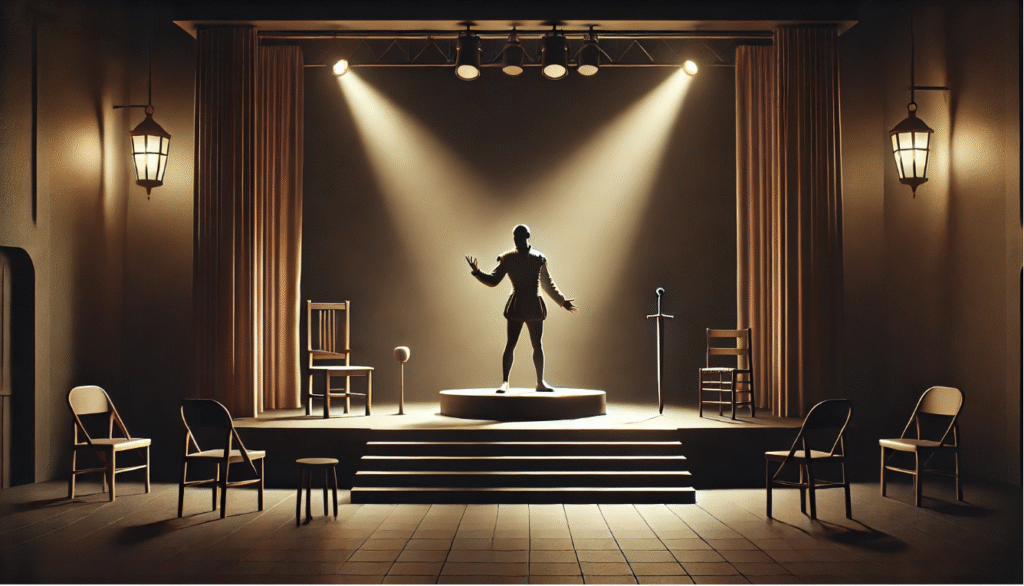Picture the Globe Theatre, 1603. The air crackles as Hamlet steps forward, his voice trembling: “To be, or not to be, that is the question.” The audience leans in, hearts racing, caught in the existential weight of his words. How does Shakespeare achieve this grip on our emotions, centuries later? The answer lies in Shakespeare’s techniques for enhancing dramatic impact, a masterful blend of language, structure, character dynamics, and staging that transforms words on a page into unforgettable stagecraft. As a director with over a decade of experience staging Shakespearean plays and consulting with theater professionals, I’ve seen firsthand how these techniques captivate audiences. This article dives deep into Shakespeare’s methods, offering actors, directors, and enthusiasts actionable insights to elevate their performances and create resonant, timeless theater.
Why Shakespeare’s Techniques Remain Unrivaled in Stagecraft
The Timeless Appeal of Shakespearean Drama
Shakespeare’s plays endure because they tap into universal human experiences—love, betrayal, ambition—that resonate across eras. In Macbeth, the protagonist’s descent into paranoia and guilt feels as visceral today as it did in 1606. His techniques create emotional stakes that transcend time, making audiences feel the weight of Lady Macbeth’s unraveling psyche or Romeo’s desperate love. By blending poetic language with raw human conflict, Shakespeare ensures his stories remain relevant, whether performed in a 17th-century playhouse or a modern black-box theater.
The Role of Dramatic Impact in Theater
Dramatic impact is the alchemy of theater: the ability to evoke powerful emotional and intellectual responses. Shakespeare’s techniques for enhancing dramatic impact—through soaring soliloquies, tense pacing, or strategic staging—create moments that linger with audiences. As Sir Kenneth Branagh, a titan of Shakespearean direction, once noted, “Shakespeare’s genius lies in his ability to make every line a performance, every scene a revelation.” His methods align perfectly with modern stagecraft’s goal: to captivate, challenge, and move audiences in a shared, live experience.
Shakespeare’s Language: Crafting Emotional and Intellectual Depth

The Power of Poetic Devices
Shakespeare’s language is a cornerstone of his dramatic impact. His use of iambic pentameter—ten syllables per line with a heartbeat-like rhythm—mirrors natural speech while elevating emotion. In Romeo and Juliet’s balcony scene, the rhythm of “But soft, what light through yonder window breaks?” conveys Romeo’s awe and urgency. Metaphors, like comparing Juliet to the sun, ignite vivid imagery, while alliteration (e.g., “fatal loins” in the prologue) adds musicality. These devices make dialogue unforgettable, amplifying emotional stakes.
Tip for Actors: When delivering iambic pentameter, emphasize the natural stress of syllables to maintain rhythm without sounding mechanical. Practice with a metronome to internalize the beat.
Soliloquies and Monologues as Emotional Catalysts
Soliloquies are Shakespeare’s secret weapon for intimacy. In Hamlet, the titular character’s “To be, or not to be” soliloquy invites the audience into his existential crisis, forging a direct emotional connection. These moments reveal inner turmoil, making characters relatable and their stakes palpable. For actors, the challenge is delivering these lines with authenticity.
Exercise: Break the soliloquy into thought units. For example, in Hamlet’s speech, pause after “To be, or not to be” to let the question hang, then shift to “Whether ’tis nobler” as a new idea. This clarifies the character’s mental journey for both actor and audience.
Wordplay and Subtext for Layered Impact
Shakespeare’s wordplay—puns, double entendres, and irony—adds depth and humor. In Much Ado About Nothing, Beatrice and Benedick’s witty banter (“I would rather hear my dog bark at a crow than a man swear he loves me”) masks romantic tension, delighting audiences with subtext. This layering keeps dialogue dynamic, rewarding attentive listeners with hidden meanings.
Example: In Othello, Iago’s seemingly innocent phrases like “I am not what I am” drip with irony, hinting at his duplicity. Actors can lean into these contradictions to heighten tension.
Structural Techniques for Building Tension and Pacing
Five-Act Structure and Dramatic Arcs
Shakespeare’s plays follow a five-act structure that builds tension methodically. In Othello, Act 1 introduces Iago’s schemes, Act 3 escalates with Desdemona’s handkerchief, and Act 5 delivers tragic resolution. This arc ensures emotional peaks and valleys, keeping audiences invested. Directors can emulate this by mapping their productions to balance rising action with climactic payoffs.
Foreshadowing and Dramatic Irony
Foreshadowing amplifies suspense. In Macbeth, the witches’ prophecy (“All hail, Macbeth, that shalt be king hereafter!”) plants seeds of ambition that bloom into tragedy. Dramatic irony, where the audience knows more than the characters, heightens engagement. In Romeo and Juliet, we know Juliet’s “death” is a ruse, making Romeo’s despair agonizingly poignant.
Director’s Tip: Highlight irony through staging—e.g., positioning Romeo near Juliet’s “corpse” to emphasize their tragic misunderstanding.
Pacing Through Scene Juxtaposition
Shakespeare masterfully alternates intense and lighter scenes to sustain momentum. In King Lear, the harrowing storm scene follows the comic relief of the Fool, preventing emotional fatigue. This juxtaposition keeps audiences engaged, a technique modern directors can use to balance heavy themes with moments of levity.
Character Dynamics: Driving Conflict and Connection

Complex Characters as Emotional Anchors
Shakespeare’s characters are richly layered, embodying contradictions that drive drama. Lady Macbeth’s ambition battles her guilt, making her unraveling in the sleepwalking scene (“Out, damned spot!”) profoundly moving. Similarly, Shylock in The Merchant of Venice blends vengeful anger with human vulnerability, eliciting both sympathy and unease. These complexities anchor audiences emotionally, making characters’ fates resonate.
Actor’s Exercise: Create a character journal to explore contradictions—e.g., list Lady Macbeth’s ambitious and remorseful traits, then rehearse scenes to emphasize this duality.
Foils and Contrasts for Dramatic Effect
Character foils amplify conflict. In Hamlet, Laertes’ impulsive revenge contrasts Hamlet’s indecision, highlighting the prince’s internal struggle. This dynamic sharpens themes of action and morality, enriching the play’s impact.
Rehearsal Tip: Pair actors playing foils to workshop scenes together, emphasizing contrasting physicality or vocal tone to underscore their differences.
Ensemble Interactions and Power Struggles
Group dynamics fuel tension. In Henry V, the court’s shifting alliances reflect power struggles, with characters like the Chorus amplifying the stakes. Directors can stage these scenes to highlight hierarchy—e.g., placing the king center-stage while subordinates circle warily.
Staging and Visual Techniques for Immersive Impact

Minimalist Staging and Audience Imagination
Shakespeare’s Elizabethan stage was sparse, relying on language and actor delivery to conjure worlds. In Hamlet, the simple stage direction “Enter Ghost” sparks terror through dialogue and movement, not elaborate sets. Modern directors can embrace minimalism, using soundscapes or lighting to evoke mood.
Example: In King Lear’s storm scene, howling winds and dim lighting create chaos, letting actors’ performances carry the emotional weight.
Use of Space and Blocking
Shakespeare’s plays use stage geography to reflect power dynamics. In Richard III, the throne’s central placement underscores Richard’s ambition, while his enemies are relegated to the margins. Directors can adapt this by using levels—e.g., elevating a king on a platform—to visually reinforce status.
Tip: Experiment with circular blocking in intimate venues to mimic the Globe’s in-the-round setup, drawing audiences into the action.
Symbolism Through Props and Costumes
Props and costumes amplify themes. In Hamlet, Yorick’s skull becomes a meditation on mortality, while Cleopatra’s regal attire in Antony and Cleopatra reinforces her authority. Designers can use these cues strategically, ensuring every visual element serves the story.
Expert Insight: Acclaimed designer Jenny Tiramani notes, “Shakespeare’s costumes were narrative tools, signaling character arcs through color and texture.”
Practical Applications for Modern Performers and Directors
Adapting Shakespeare’s Techniques for Today’s Stage
Shakespeare’s methods translate seamlessly to modern theater. Directors can use soliloquy-style monologues in devised works to build audience intimacy, while actors can apply iambic rhythm to contemporary scripts for heightened emotion. For example, a modern adaptation of Romeo and Juliet might use urban settings but retain the poetic cadence of the original dialogue.
Rehearsal Strategies for Actors
To master Shakespeare’s language, actors should:
- Parse the Text: Break monologues into thought units, noting shifts in emotion or intent.
- Embrace Physicality: Use gestures to embody metaphors—e.g., reaching upward when Hamlet speaks of “heaven.”
- Practice Subtext: Deliver lines with layered intentions, like Iago’s deceptive warmth.
Step-by-Step Monologue Analysis:
- Choose a speech (e.g., Macbeth’s “Tomorrow and tomorrow”).
- Identify the emotional arc (despair to resignation).
- Mark stressed syllables to maintain rhythm.
- Rehearse with a partner, adjusting based on feedback.
Directing with Shakespearean Principles
Directors can enhance productions by:
- Pacing Deliberately: Alternate high-energy scenes with reflective moments.
- Staging Dynamically: Use the entire stage to reflect relationships, as in Othello’s claustrophobic confrontations.
- Focusing on Clarity: Ensure actors’ delivery makes archaic language accessible.
Example: The Globe Theatre’s minimalist staging inspires modern directors to prioritize actor-audience connection over elaborate sets.
Case Studies: Shakespeare’s Techniques in Action
Macbeth: A Masterclass in Tension and Tragedy

Macbeth weaves language, structure, and staging into a relentless tragedy. The witches’ rhythmic chants set an ominous tone, while the five-act structure builds to Macbeth’s inevitable doom. Staging choices, like dim lighting for the banquet scene, amplify the supernatural dread, making every moment pulse with tension.
A Midsummer Night’s Dream: Balancing Comedy and Drama
This play showcases Shakespeare’s ability to blend humor and emotional stakes. The lovers’ quarrels, driven by witty dialogue and mistaken identities, contrast with Oberon’s mythic power struggles. Directors can use vibrant costumes and fluid blocking to highlight this interplay, keeping audiences enchanted.
Modern Adaptations and Their Success
Baz Luhrmann’s Romeo + Juliet (1996) proves Shakespeare’s techniques thrive in modern contexts. By retaining the original dialogue but using cinematic visuals (e.g., neon-lit Verona Beach), Luhrmann captures the play’s emotional intensity. Theater critics praise such adaptations for making Shakespeare accessible without sacrificing depth.
Common Mistakes to Avoid When Applying Shakespeare’s Techniques
Overcomplicating Language Delivery
Actors often overemphasize archaic pronunciation, alienating audiences. Instead, focus on emotional clarity—deliver “O Romeo, Romeo” as a heartfelt plea, not a recitation.
Neglecting Audience Engagement
Modern audiences expect immediacy. Directors who prioritize textual fidelity over emotional connection risk losing viewers. Incorporate dynamic staging and relatable character choices to bridge the gap.
Misinterpreting Staging Opportunities
Overreliance on elaborate sets can dilute Shakespeare’s language-driven impact. A minimalist approach, paired with strong actor performances, often proves more effective.
Shakespeare’s techniques for enhancing dramatic impact—poetic language, structured pacing, complex characters, and evocative staging—remain the gold standard in stagecraft. By mastering these methods, performers and directors can create theater that resonates deeply, whether in a community playhouse or a Broadway stage. Experiment with these techniques in your next production, attend a Shakespearean play to see them in action, or dive into resources like The Folger Shakespeare Library for deeper study. Shakespeare’s genius lies in his ability to make every performance a shared journey—unleash that power in your craft.
FAQs
How can modern actors make Shakespeare’s language accessible to audiences?
Focus on the emotional truth behind the words. Use natural inflection and clear intentions, as if speaking modern dialogue, to convey meaning.
What are the most important Shakespearean techniques for directors?
Prioritize pacing, dynamic blocking, and character-driven storytelling to maintain audience engagement and highlight themes.
How do Shakespeare’s techniques apply to non-theatrical performances?
Techniques like subtext, emotional arcs, and dynamic interactions enhance film, public speaking, and digital content creation by fostering connection and depth.


